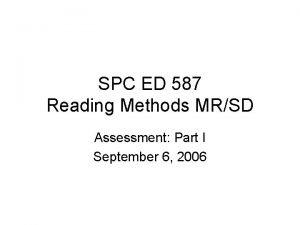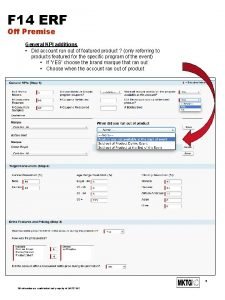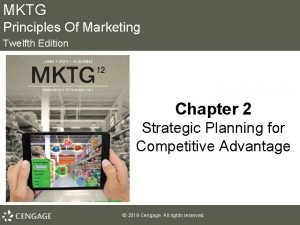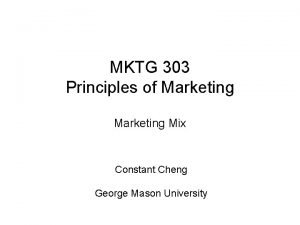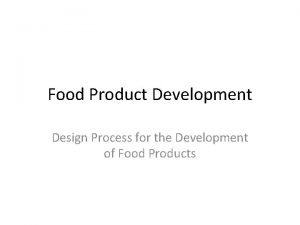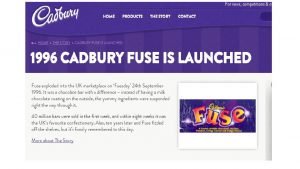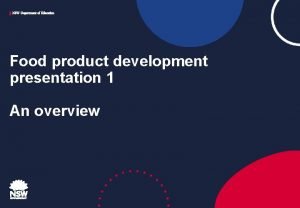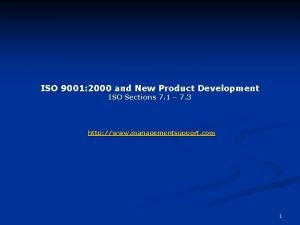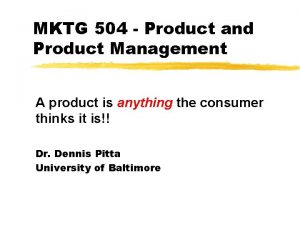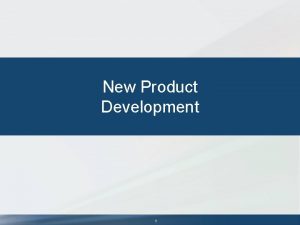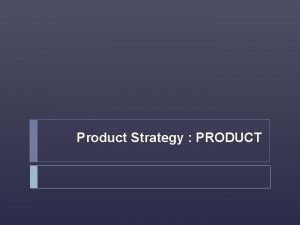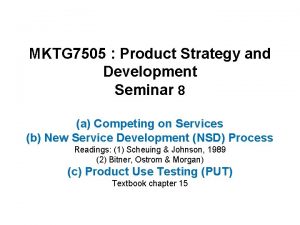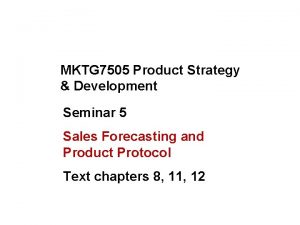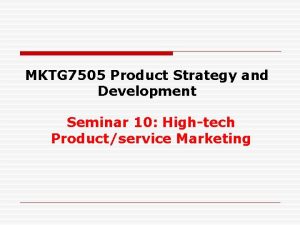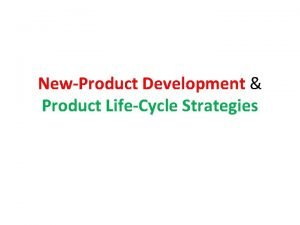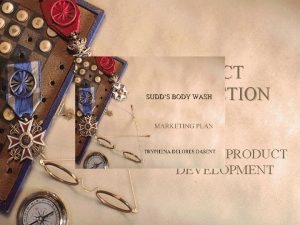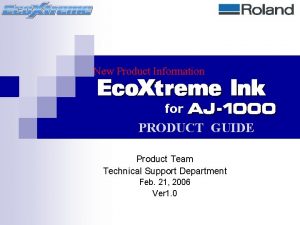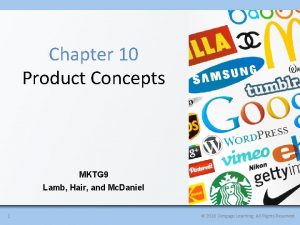MKTG 587 New Product Development Module 2 a





















- Slides: 21

MKTG 587 New Product Development Module 2 a: Opportunity Identification and Selection Copyright 2018 Montclair State University

Learning Objectives • What is an opportunity? • Types of opportunities • Opportunity identification process • Product innovation charter

Opportunity • Opportunity is an idea for a new product • Hypothesis about how value might be created • Necessary to identify a set of opportunities and then select a subset for further development

Types of Opportunities

Innovation Mindset The Specialist Mode • New products created by pushing the envelope of product performance • High-risk, high-reward projects are developed by formal organizations • VW, Boeing, IBM etc The Venture Mode • Expands the flexibility and speed with which innovators act • These are individuals inside firms, entrepreneurs, and diyers • Digital design tools have created low entry barrier and allowed more to participate • GE Garages Adapted from Marion, T. J. and Fixson, S. K. (2016). The 4 Main Ways to Innovate in a Digital Economy. Harvard Business Review.

Innovation Mindset The Community Mode The Network Mode • Attracts large number of entrants due to low entry barrier • Collaborating with like minded strangers • Quirky, Inc; Gig economy • Brings together the expertise from a wide range of disciplines and geographies • Characterized by high performance product design expertise seen in specialist firms with trust-based sharing behavior of communities and close vendor networks Adapted from Marion, T. J. and Fixson, S. K. (2016). The 4 Main Ways to Innovate in a Digital Economy. Harvard Business Review.

MKTG 587 New Product Development Module 2 b: Managing the Opportunity Identification Process

Managing the Opportunity Identification Process • Generate a large number of opportunities • Seek high quality of the opportunities generated • Create high variance in the quality of opportunities

Opportunity Identification Factors Adopted from Ulrich, K. T. and Eppinger, S. D. (2011), Product Design and Development, Mc-Graw-Hill, New York

MKTG 587 New Product Development Module 2 c: Opportunity Identification Process

Opportunity Identification Process Step 1: Establish a charter Step 2: Generate and sense many opportunities Step 3: Screen opportunities Step 6: Reflect on the results and the process Step 5: Select exceptional opportunities Step 4: Develop promising opportunities

Step 1: Product Innovation Charter (PIC) • Document/charter specifying the conditions under which a firm will operate • Designed to provide guidance to the business units on the role of innovation • Consists of a set of policies, objectives, guidelines, and restrictions

Need for PIC • To chart the team’s direction § What technologies/what markets? • To set the team’s goals and objectives § Why does it exist? • To tell the team how it will play the game § What are the rules and constraints § Any other key information to consider

Focus At least one clear technology dimension and one clear market dimension that match and have good potential Goals-Objective What the project will accomplish, either short-term objectives or longer-term goals and how it will be evaluated Guidelines Any rules and requirements imposed by the situation or by management, order of market entry, time, quality, cost factors

Adopted from Bark, C. K. (2002). Product innovation charters: Mission statements for new products, R&D Management, 32(1), 23 -32.

Step 2: Generate and Sense Opportunities Adopted from Ulrich, K. T. and Eppinger, S. D. (2011), Product Design and Development, Mc-Graw-Hill, New York

Product Opportunities from Emerging Trends Just-in-time life Sensing consumers The transparent self In search of “enoughness” Virtual made real Co-creation Hines, A. , Calder, J. , and Abraham, D. (2009). “Six catalysts shaping the future of product development”, Visions, 33(3), pp. 20 -23.

Step 3: Screen Opportunities • Eliminate opportunities that are highly unlikely to generate value • Effective screening criterion § Independent judgements of a group of people

Step 4: Develop Promising Opportunities • Better to bet on multiple opportunities • Invest modest levels of resources in developing few opportunities § Could complete customer interviews, testing of existing products, concept generation, quick prototypes etc. • Goal would be to resolve the greatest uncertainty surrounding each opportunity at the lowest cost in time and money

Step 5: Select Exceptional Opportunities • Real-Win-Worth-it (RWW) § Is the opportunity real? § Can you win this opportunity? § Is the opportunity financially worth it?

Step 6: Reflect on the Results and Process • How many of the opportunities identified came from internal sources versus external sources? • Did we consider dozens or hundreds of opportunities? • Are the resulting opportunities exciting to the team?
 Pseudo color image processing
Pseudo color image processing New product development and product life cycle strategies
New product development and product life cycle strategies Spc 587
Spc 587 Dlee-587
Dlee-587 Csce 587
Csce 587 Mktg 8
Mktg 8 Mktg emc
Mktg emc Mktg 12 principles of marketing
Mktg 12 principles of marketing Mktg 12th edition
Mktg 12th edition Mktg 12th edition
Mktg 12th edition Sports entertainment definition
Sports entertainment definition Constant cheng
Constant cheng Mktg 10
Mktg 10 Contoh product development
Contoh product development Product development funnel
Product development funnel Food product development process flowchart
Food product development process flowchart Product idea development
Product idea development Tabular wbs
Tabular wbs Food product development definition
Food product development definition New product development procedure iso
New product development procedure iso Product planning and development strategy
Product planning and development strategy Edlc in embedded system
Edlc in embedded system


